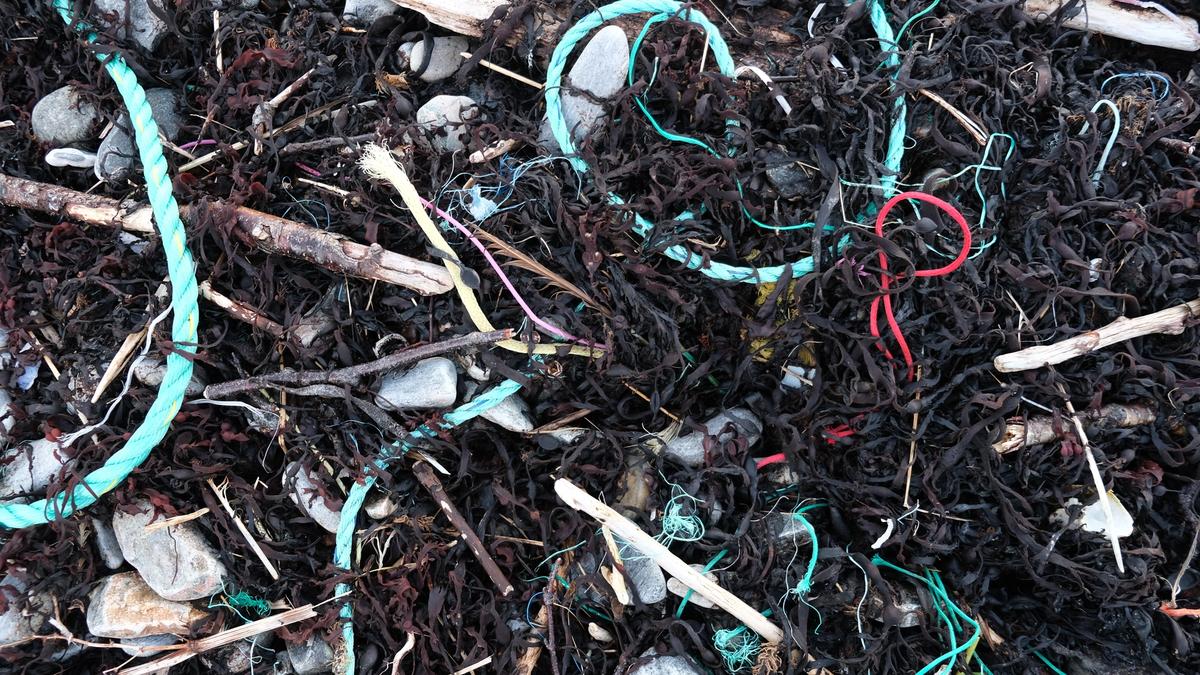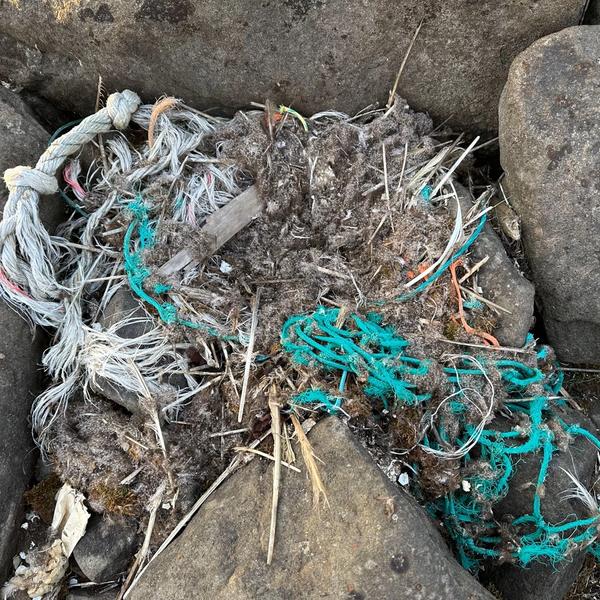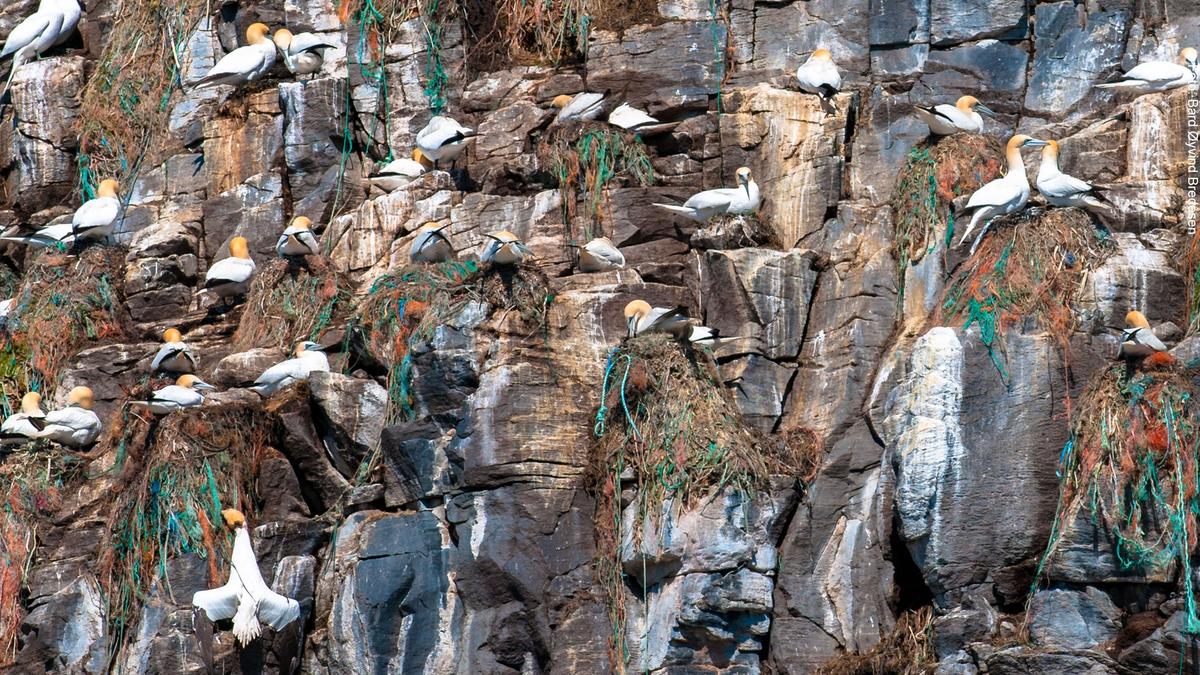A piece of rope might be small, but the amount found in our seas is significant in terms of quantity and volume. The consequences there are significant and serious.
Pieces of rope and cut-offs are broken down into smaller and smaller pieces
Rope and pieces of rope are made from different types of plastic and consist of many smaller threads that are bundled together. Pieces of rope therefore go from one to becoming many, many threads of plastic that in turn are broken down into small pieces of plastic.

Eventually, these turn into microplastics and end up in the actual food chain of all marine animals.
Marine animals of all kinds from zooplankton to whales eat plastic. They also end up trapped in pieces of rope and remnants of tools. The consequences of this are that marine animals do not get the nutrients they need, become sick and at worst die. Plastic can now be found in all marine ecosystems.
Seabirds build nests of rope pieces, cuts and smaller pieces of plastic

In Norway, this trend is also observed in seabirds. They use plastic to build nests. One example is the Northern Gannet. Pieces of rope and smaller pieces of plastic are very visible in many of the bird cliffs along our coast. Many seabirds live and nest in plastic, get stuck, injured and die.
Seabirds also eat plastic, which can lead to an accumulation of environmental toxins, decreased fertility and in some cases even death. Plastic currently accounts for no fewer than one million seabird deaths each year on a global scale.
We need to protect our seafood
Norway is a maritime nation and the sea has always been one of our most important resources. The fish in the sea have played a crucial part in our history. Norway has an excellent reputation for high-quality fish and other seafood, but plastic has been found in Norwegian seafood. Most studies have been conducted on larger microplastics found in the intestines. Larger microplastics cannot make their way into the rest of the fish, but extremely small plastic particles do. These have been found in fillets and in liver. Unfortunately, this is one of the consequences of marine litter. Norwegian researchers are now working to understand how much plastic there is in seafood and the impact it has on our food. This is the main project being conducted at the HI plastics laboratory in Bergen.

Because the sea is one of our most important sources of protein. People enjoy eating fish and other seafood. This means that we can also consume plastic from seafood. The plastic we consume can have negative consequences for our health. This is something researchers are now working on, in order to gain a better understanding and to document it.
Thank you to Runde Environmental Centre for the main photo, taken by Bård Øyvind Bredesen.


